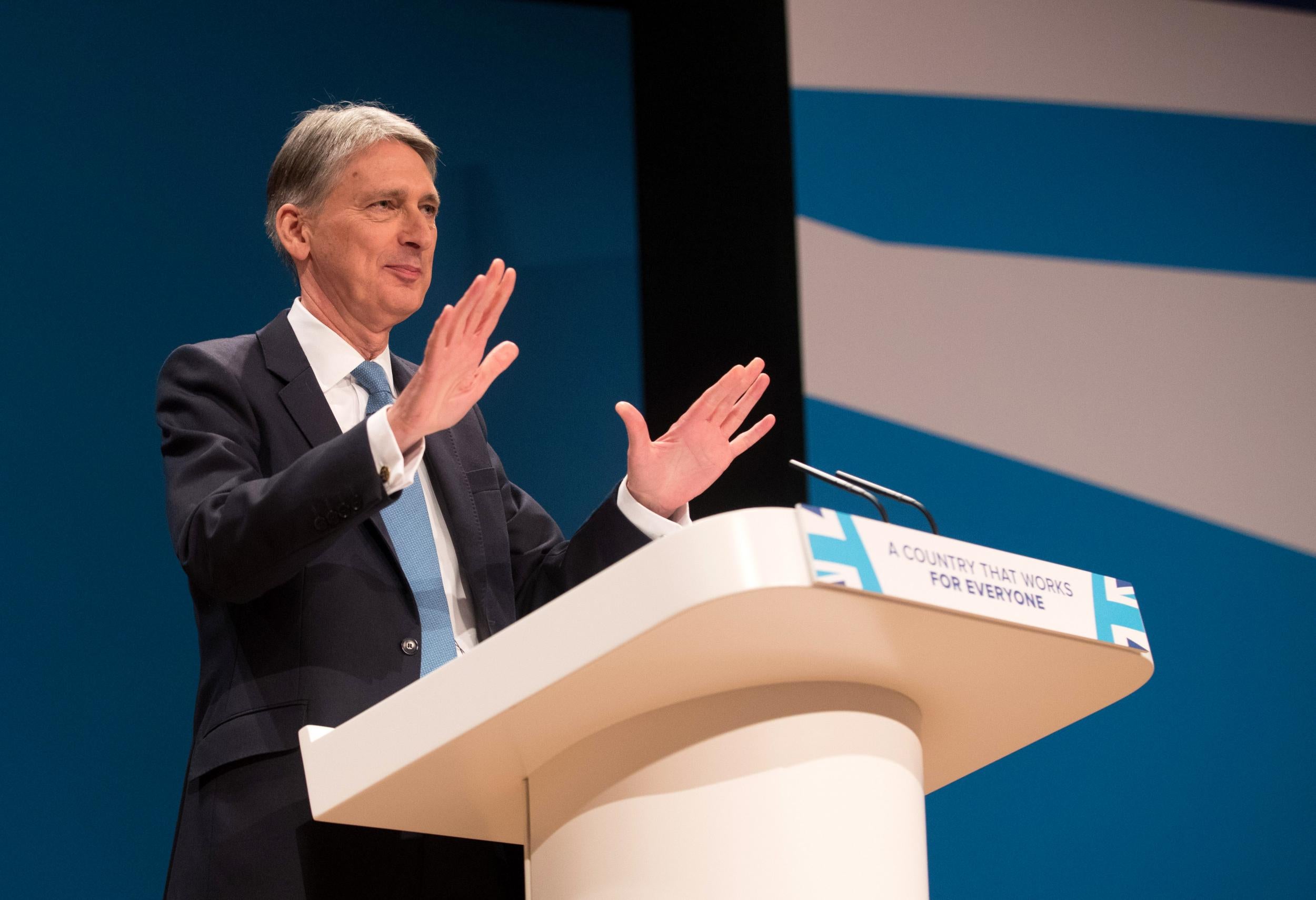Philip Hammond and Theresa May are not a united partnership – but he’ll keep on dancing to her tune
This partnership was always going to be different from David Cameron’s close pairing with George Osborne. May and Hammond have been thrown together by events, and she will know the fine print of the Autumn Statement well before the Chancellor delivers it

When Theresa May formed her Government in July, pro-EU Conservatives hoped that she appointed the “Three Brexiteers” – Boris Johnson, David Davis and Liam Fox – to own their mistakes and make a mess of it. They envisaged Philip Hammond, the new Chancellor, riding to the rescue with a plan to keep Britain in the single European market.
It hasn’t worked out like that. May’s speech to the Tory conference on Sunday suggests that the see-saw has tipped towards the “hard Brexit” sought by the “Three Brexiteers” and away from Hammond. Although he is fighting to protect the financial services, car and aerospace industries, the word on the Whitehall grapevine is that the Chancellor is enjoying less influence than he hoped as May calls the shots from Number 10.
In his speech to the Conservative Party conference, Hammond showed that his emphasis is slightly, but importantly, different from May’s. He believes that the referendum’s implicit mandate is to regain sovereignty and control of borders “while protecting our economy, our jobs and our living standards”.
The most important line in his speech was this: “The British people did not vote on 23 June to become poorer or less secure”. That comes close to what his now outcast predecessor George Osborne is arguing: the public did not vote for a “hard Brexit”.
Hammond is inside May’s tent and so he must play the team game. The Treasury’s natural focus on the economic risks of Brexit means he is the “soft cop” urging a softer Brexit than the “hard cop” Brexiteers. If May is leaning in their direction, as it now appears, Hammond’s relationship with the Prime Minister will be severely tested.
This partnership was always going to be different from David Cameron’s close pairing with Osborne. They were soulmates in a joint project until the bitter end – unlike Tony Blair and Gordon Brown, whose partnership broke under the strain of Brown’s impatience to take over.
Instead, May and Hammond have been thrown together by events. The Chancellor is a safe pair of hands who can help May steady the ship and calm the financial markets, but there is no doubt who is First Lord of the Treasury. Unlike Blair, May will know the fine print of the Budget or Autumn Statement well before the Chancellor delivers it. The Treasury, traditionally powerful in Whitehall, has less clout today than during what is dubbed the “Camborne” era. We are unmistakably in the age of May, and no one else.
In media interviews, Hammond insists that the Treasury will be “right at the heart” of the discussion about the single market. He is “quite satisfied” with the arrangements for working with Downing Street. But he could hardly say it in public if he wasn’t.
He fights his corner; in another sign that they are not bosom pals, Hammond expressed doubts about May’s new industrial strategy at the first Cabinet committee discussion of it.
As Hammond admitted in his conference speech, he had hoped to arrive at the Treasury much earlier. The fiscal hawk, described by fellow ministers as “dry as dust,” would have been Chief Secretary to the Treasury under Osborne in 2010 if the Tories had won a majority. He would have been a pivotal figure in the Government’s austerity drive. The plan was rudely interrupted by the need for coalition and Hammond’s post went to the Liberal Democrats.
So he is an unlikely figure to turn on the spending taps to allow the economy to survive what he calls the “turbulence and uncertainty” of Brexit. For him, it is about being a “pragmatic Conservative”, with new policies for new circumstances. However, he has rowed back from the “end to austerity” headlines of this summer, when May abandoned Osborne’s target to run a budget surplus by 2019-20. Hammond insisted the deficit must be eliminated, albeit over a longer period.
We won’t know how radical his boost for road, rail and other infrastructure projects will be until his Autumn Statement on 23 November. Its scope (and that of any other measures such as tax cuts) will depend on the very latest post-referendum economic data. So far, the figures have not justified the screaming headlines of Cameron-Osborne’s “Project Fear” but the real economic shock may not come until the shape of the Brexit deal emerges. Hammond repeatedly warns Cabinet colleagues: “We are not out of the woods yet.” As one aide put it: “There is a lot more to come.”
The Chancellor told the Tory conference that “our economic future must not be defined by Brexit alone”. He will be lucky to avoid such a fate. Hammond’s job of keeping Britain out of recession in the run-up to the next general election may prove much harder than the coalition spending cuts he wanted to make.
Subscribe to Independent Premium to bookmark this article
Want to bookmark your favourite articles and stories to read or reference later? Start your Independent Premium subscription today.

Join our commenting forum
Join thought-provoking conversations, follow other Independent readers and see their replies